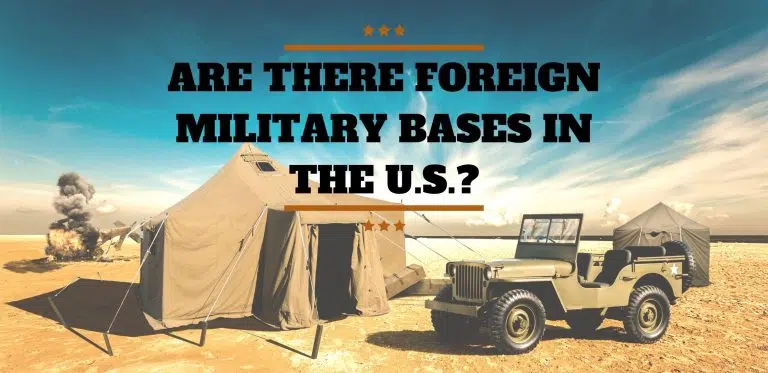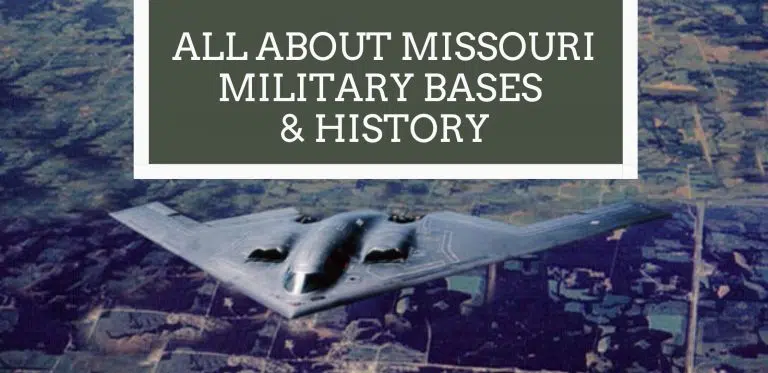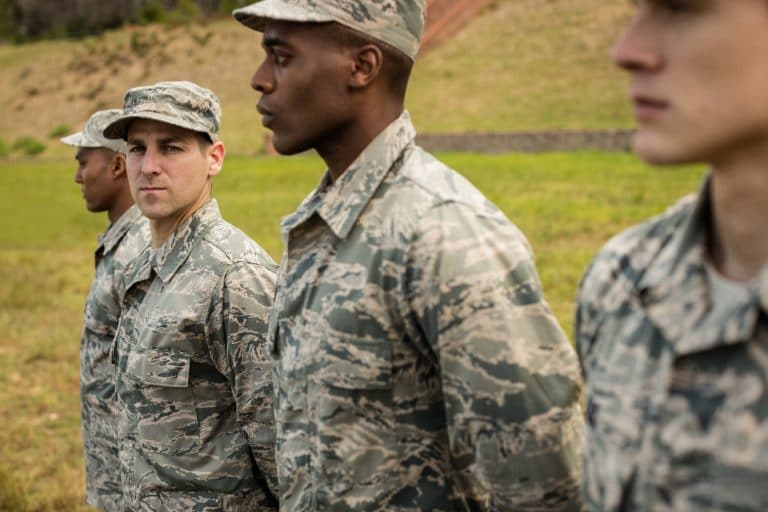What Are The 10 Classes Of Supply For The U.S. Army?
Important Note: When you buy through our links, we may earn a commission. As an Amazon Associate we earn from qualifying purchases. Content, pricing, offers and availability are subject to change at any time - more info.
The United States Army has adopted a system that divides all supplies into ten classes established numerically. The system allows for carefully calibrating supplies into various categories, eliminating confusion for all army personnel. Irrespective of your rank, duty position, or MOS, it’s important to understand the different supply classes adopted by the army.
The 10 Classes Of Supply For The United States Army Are Below. Read On To See The Full List!
Key Takeaways
- The ten supply classes for the United States Army exist to help classify all the supplies used by the army personnel into logical categories. This is especially helpful in logistics and the organization of supplies across the board.
- Everybody who uses these supplies must efficiently familiarize themselves with all the supplies classes. This is essential irrespective of an individual’s rank, position, or MOS. At a minimum, a basic understanding of the supply systems is a requirement.
- If you have familiarized yourself with all the classes, you will know who to reach out to in order to request supplies. You will also know the required processes involved in requesting supplies.
- The supply sergeant is usually the person to approach when you need to request supplies. The relevant supply sergeant handles all supplies at the unit level. This individual’s job is to control the storage, issuing, safeguarding, and maintenance of all supplies. This applies across all levels of value, from the most inexpensive supply items to the most high-end, expensive ones.
- If you need supplies, you should make a formal or informal request with the relevant supply sergeant. If the item is within reach and on-hand, it will be issued immediately and directly.
- Suppose the item that has been requested is not within direct reach. In that case, a request for the item in question will be sent by the supply sergeant through higher headquarters to requisition the required items. This is usually achieved through the Battalion S4 or the relevant Property Book Officer.
What Are The 10 Classes Of Supply For The U.S. Army?
The ten supply classes for the United States Army have been classified logically according to who the supplies are for, what needs they aim to serve, and how frequently they are used. The categories also divide items according to their overall cost and the scarcity and value of each item in question.
While some categories contain items used by army personnel in their capacity, other categories refer to items used in army missions, conflict situations, and assisting civilians in times of need. Gaining an understanding of the supply classes of the U.S. Army will ensure that individuals are fully aware of who to approach when a need arises for any type of item.
1. Army Supply Class 1: Subsistence (Food, rations, and water)
The first class of army supply refers directly to anything consumed by army personnel. This category of supplies is arguably the most important for ensuring the health and survival of every army member.
Subsistence in this context refers to the food, rations, and water needed to maintain the livelihood of every individual in the army. This refers to MREs, UGR rations, snacks, and other prepackaged meals. Naturally, drinking water forms part of the subsistence class of United States Army supplies.
The range of MREs (Meal, Ready-to-Eat) has increased drastically in recent years, with the range extending from only twelve to twenty-four available meal varieties.
Another part of the first supply class is a selection of free health and comfort items that will drastically increase the health and happiness of all army members.
The subclasses for Class 1 are as follows:
- A – nonperishables
- C – Combat Rations
- R – Refrigerated
- S – Other Nonrefrigerated
- W – Water
2. Army Supply Class 2: Clothing
The second class of United States army supply refers not only to clothing but to a range of items required by army personnel. In addition to clothing, this supply class includes various items such as tents, tools and tool kits, hand tools, unclassified maps, individual equipment, housekeeping supplies, and administrative supplies.
The subclasses for Class 2 of United States Army supplies are as follows:
- A – Air
- B – Ground Support Material
- E – General Supplies
- F – Clothing
- G – Electronics
- M – Weapons
- T – Industrial Supplies
3. Army Supply Class 3: Petroleum, Oils, and Lubricants
The third class of army supply consists of petroleum, oils, and lubricants. This refers to any fuel for different types of vehicles and other needs. It also refers to lubricants, oils used for hydraulic or insulating purposes, grease, preservatives, liquids and gases, bulk chemical products, antifreeze compounds, transmission fluid, coolants, and coal.
The subclasses for this supply class are as follows:
- A – Petrol, oil, and lubricants for aircraft
- W – Petrol, oil, and lubricants for surface vehicles
- P – Packaged petrol, oil, and lubricants (POL, for short)
4. Army Supply Class 4: Fortification And Barrier Materials
The fourth army supply class essentially consists of construction materials. These materials are used to construct barriers and fortifications or any other type of construction deemed necessary.
Some items included in this category are barbed wire, lumber, nails, plywood, metal fence posts, sandbags, steel culverts, etc.
The subclasses within this supply class are as follows:
- A – Construction
- B – Barrier
5. Army Supply Class 5: Ammunition
The ammunition supply class refers to ammunition of all types. Anything that can be classified as ammunition will fall into Army Supply Class 5. Hand grenades, bullets, explosives, fuses, pyrotechnics, rockets, bombs, mines, detonators, missiles, and propellants all fall into the ammunition category.
There are two subclasses within the ammunition supply class. The two subclasses of ammunition are as follows:
- A – Air Delivery
- W – Ground
6. Army Supply Class 6: Personal Items
The sixth class of army supply consists of personal items. Funnily enough, alcohol falls into this category too. Class 6 supply stores are renowned for the sale of alcohol.
Personal items refer to items needed by army personnel and mostly consist of personal hygiene items. Some of these items include oral hygiene items such as mouthwash and toothpaste. This category includes deodorant, shampoo, wet wipes, toilet paper, food for snacking, paper for writing on, cigarettes, cameras, and batteries.
There are no defined subcategories for this supply category, as it mainly consists of personal demand items that army personnel use daily.
7. Army Supply Class 7: Major End Items
Army supply class 7 refers to major end items. Large, extremely high-value items cost large amounts of money compared to other items in the supply classes. This supply class includes racks, tracked vehicles, and pylons.
Most of the items in this supply category are military vehicles used in combat. This includes HMMWVs, Bradley fighting vehicles, five-ton trucks, MLRs, M1 Abrams, tanks, and artillery guns.
The subclasses for this supply class consist of the following:
- A – Air
- B – Ground support material
- D – Administration Vehicles
- G – Electronic items
- J – Racks, adaptors, and pylons
- K – tactical vehicles
- L – missiles
- M – weapons
- N – special weapons
- X – aircraft engines
8. Army Supply Class 8: Medical Supplies (Minimal Amounts)
The army supply class 8 refers to medical supplies. These are usually available only in minimal amounts to meet basic medical needs in an emergency. Some items included in this category are bandages, I.V.s, tubes, needles, swabs, and other similar items.
Part of this category is the items needed for fixing medical equipment. Blood and plasma are also included in class 8 of military supplies.
The subclasses of army supply class 8 consist of the following:
- A – Medical materials
- B – Blood and fluids
9. Army Supply Class 9: Parts For Repairs
Class 9 of army supplies includes any parts that may be needed to repair and maintain any vehicles and equipment. This includes but is not limited to parts and items such as transmission, tires, weapon parts, engines, oil filters, tank tracks, etc.
The subclasses consist of parts for the following:
- A – Air
- B – Ground Support Material
- D – Administrative vehicles
- G – Electronics
- K – Tactical Vehicles
- L – Missiles
- M – Weapons
- N – Special Weapons
- X – Aircraft Engines
10. Army Supply Class 10: Miscellaneous Supplies/Civil Affairs
The final supply class consists solely of miscellaneous supplies mostly used for assisting civilians. These materials and equipment items are used to assist with non-military programs for use in agricultural and economic development. They are not included in classes one through nine.
Related Questions
There are several questions that individuals might have after reading this article about the classes of supply.
MRE refers to “Meal, Ready-to-eat.” These prepackaged meals are sealed in lightweight containers and can be eaten at room temperature or heated. They contain all the required nutrients for a single meal and are used when other food supplies are unavailable. There are currently 24 varieties of MREs available.
A major end item is a final combination of end products ready to use. These items, such as large vehicles, make up a small percentage of the number of items in supply. However, these items make up a large percentage of the total value of the supply.
The supply sergeant is usually in charge of supplies, so this is the person you should approach whenever you have any requests for items.
Index
- Key Takeaways
- What Are The 10 Classes Of Supply For The U.S. Army?
- 1. Army Supply Class 1: Subsistence (Food, rations, and water)
- 2. Army Supply Class 2: Clothing
- 3. Army Supply Class 3: Petroleum, Oils, and Lubricants
- 4. Army Supply Class 4: Fortification And Barrier Materials
- 5. Army Supply Class 5: Ammunition
- 6. Army Supply Class 6: Personal Items
- 7. Army Supply Class 7: Major End Items
- 8. Army Supply Class 8: Medical Supplies (Minimal Amounts)
- 9. Army Supply Class 9: Parts For Repairs
- 10. Army Supply Class 10: Miscellaneous Supplies/Civil Affairs
- Related Questions
- Index






